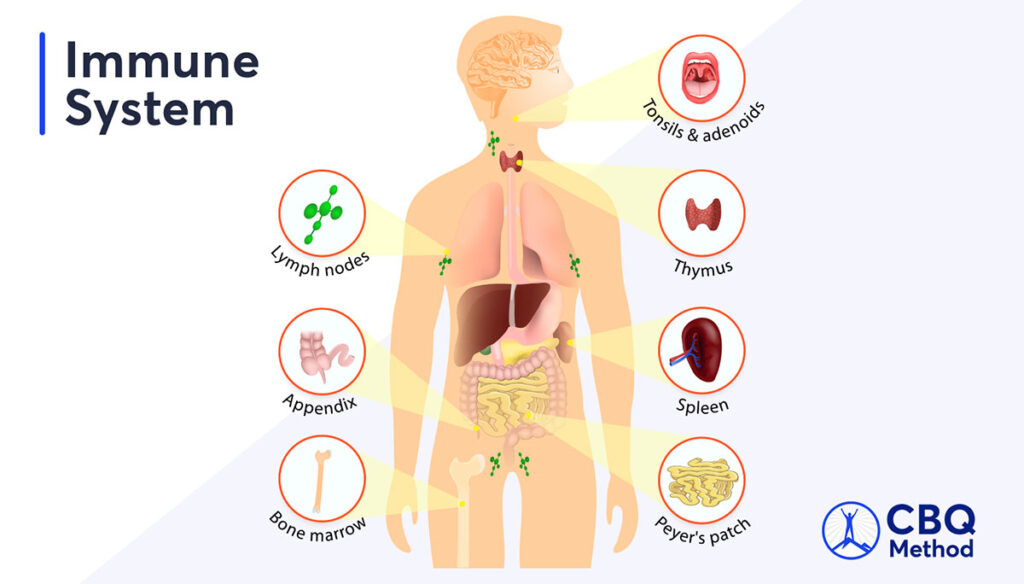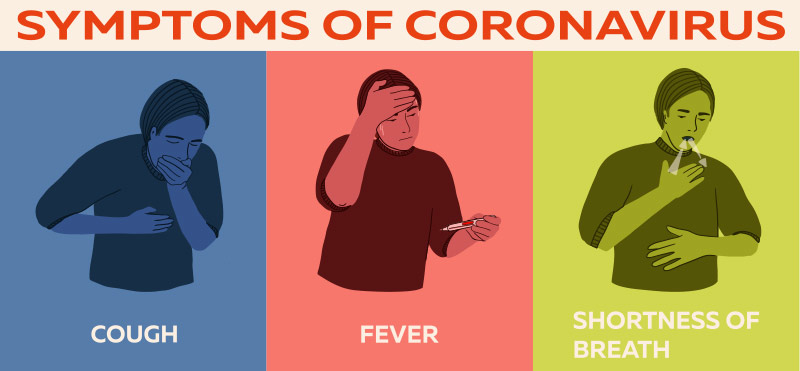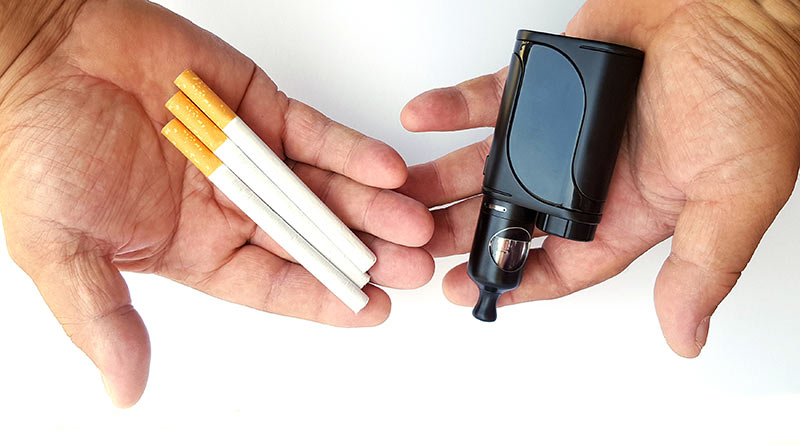Welcome to episode #3 of Ask an Ex.
In this video, you’ll hear Rosa’s story of how she quit smoking for good!
Even though she tried to succeed before using willpower and nicotine patches, her efforts didn’t last, and she wasn’t a happy non-smoker.
But she kept searching for a better way, found it, gave it her best shot, used her incredible resourcefulness, and she made it!
In this video, she shares how she did it + a lot of tips you can start doing right now to make your quit smoking journey easier, even if you’re stuck at home in quarantine.
As Rosa explains, it’s doing the little things that help you feel better overall.
In this video, Rosa shares:
- How she quit smoking this time and what was different from past attempts.
- What she chose to replace smoking with.
- How she was able to socialize and enjoy herself as a non-smoker with her friends who smoke.
- How she copes with stress as a non-smoker.
- And her advice for those who are struggling to quit smoking!
About Ask An Ex
ASK AN EX is a new interview series. Each interview features an inspiring ex-smoker who succeeded with the CBQ Method ™
And they tell you everything – how they did it, what helped them, what challenged them, their fears, motivations and aspirations.
Because the best person to ask about quitting smoking, is an Ex who’s been exactly where you are right now.
Every EX shares their unique perspective and wisdom on quitting smoking (because everyone has a unique mix of background, mindset, and experiences).
And they do it for 1 reason: to help YOU become an EX too.
Get the CBQ Method Foundational Video & Join our Newsletter here:
http://bit.ly/startcbq
Join the CBQ Method Facebook Support Community:
http://bit.ly/cbqmethodcommunity
SUBSCRIBE to this channel to get more videos like this to help you quit smoking:
https://www.youtube.com/channel/UCRPLgL5_AAHwtnP9Qwu8tsw?sub_confirmation=1
Transcript
0:00:00.020,0:00:04.820
Hi everyone this is Nasia Davos and
welcome to this episode of Ask An Ex
0:00:04.830,0:00:09.480
today you’ll hear from someone who
joined our CBQ program and who has a
0:00:09.480,0:00:14.219
lot to share with you about her success
in quitting smoking so if you think you
0:00:14.219,0:00:16.980
can’t quit or if you’re struggling to be without
0:00:16.980,0:00:22.540
cigarettes stay with us
0:00:26.000,0:00:28.980
The ex I have
with me today quit smoking after 24
0:00:28.980,0:00:34.320
years overcame all sorts of tempting
situations that life threw at her she’s
0:00:34.320,0:00:37.890
still happy nonsmoker and she’s here to
tell you how she did it
0:00:37.890,0:00:43.370
please welcome Rosa Maria Roca hi Rosa
thank you so much for being here
0:00:43.370,0:00:50.940
Hi Nasia you’re welcome pleasure so you have been
a non smoker for about a year now right
0:00:50.940,0:01:00.079
yeah 12 December 2018 was your quit date
congratulations this is a huge milestone
0:01:00.079,0:01:06.180
thank you yeah it is actually
so proud of myself you should be so
0:01:06.180,0:01:15.180
you’ve been smoking for 24 years how did
you start smoking well with a group of
0:01:15.180,0:01:22.380
friends actually my best friend she she
started and I asked her for for one just
0:01:22.380,0:01:28.350
to try it the silly things you do when
you are a teenager and I found it
0:01:28.350,0:01:32.729
disgusting was horrible but then it was
trendy
0:01:32.729,0:01:39.750
everybody did it so why not yeah makes
sense though I think most of us started
0:01:39.750,0:01:47.549
smoking that way yeah yeah yeah so over
the years did you ever think about
0:01:47.549,0:01:55.979
quitting yes a few times yes especially
when I got sick and I started coughing
0:01:55.979,0:02:03.360
and then the smell again I didn’t like
the smell when I wanted to climb a
0:02:03.360,0:02:10.979
mountain and I couldn’t because I was
just out of breath and yeah with all
0:02:10.979,0:02:15.810
these situations you find yourself stuck
in something that is quitting you the
0:02:15.810,0:02:21.060
freedom to do so do whatever you want on
right and in a healthy and happy way
0:02:21.060,0:02:30.720
yeah but I did it with success so so you wanted to
quit for all those reasons did you ever
0:02:30.720,0:02:38.849
make a serious attempt yes I did
a couple of them were serious the others
0:02:38.849,0:02:45.120
were not serious but the couple of them
do you know what happened it was very
0:02:45.120,0:02:52.739
frustrating because I ended up crying on
the corners of the house oh my god yeah
0:02:52.739,0:02:56.280
it was because I did it on my own
without any help
0:02:56.280,0:03:03.329
vaping it didn’t exist yet I think
patches weren’t as known as they are
0:03:03.329,0:03:10.260
nowadays and so I did it myself
like with willpower yeah just yeah it
0:03:10.260,0:03:14.760
just took me a lot of tears and I
couldn’t in the end I couldn’t just yeah
0:03:14.760,0:03:23.790
relapsed again yeah is this horrible and
last year what what happened and you
0:03:23.790,0:03:33.799
said I’m gonna try to quit again
I turn 40 I had like a painful leg
0:03:33.799,0:03:38.849
because I don’t have an excellent
circulation I think now is much much
0:03:38.849,0:03:46.680
better after that we have to say no more
pain in my leg so it was definitely the
0:03:46.680,0:03:53.849
cigarettes and then the you know I’ve
got two kids and I had to sneak out in
0:03:53.849,0:03:59.160
the garden every time like after the
meals to light a cigarette they were
0:03:59.160,0:04:03.450
calling me because they wanted to play
with me before a reading time before
0:04:03.450,0:04:10.650
going to bed and you know I started to
to find it very horrible actually for
0:04:10.650,0:04:16.260
them they were they are nowadays also
very aware of it so they know it’s
0:04:16.260,0:04:20.970
something bad they were saying mom when
are you gonna quit why do you do it
0:04:20.970,0:04:26.500
do you really need to smoke and I was
asking a great question
0:04:26.500,0:04:34.630
yeah they get to challenge myself when I
said listen it’s now or never it’s now
0:04:34.630,0:04:43.830
or never and I did it thanks to you Nasia well
I’m very happy you found this program
0:04:43.830,0:04:51.940
what made you decide to try the CBQ
method because well I tried patches
0:04:51.940,0:05:00.910
before mm-hmm well last time yeah they
I mean they take the anxiety of the
0:05:00.910,0:05:05.800
urges off but you still have the
cigarettes going on in your mind
0:05:05.800,0:05:12.370
so that and yeah just addicted to them
you still addicted to them the
0:05:12.370,0:05:21.150
difference with your program was that
that um you start from the deep roots of
0:05:21.150,0:05:26.200
smoking so where are the deep roots
that’s what I found and you start
0:05:26.200,0:05:33.870
thinking about why what is making you
continue smoking and all that stuff and
0:05:33.870,0:05:40.290
it makes a difference actually when when
you when you go so deeply and just like
0:05:40.290,0:05:45.970
analyzing why you do it
um well it’s different just have to say
0:05:45.970,0:05:49.930
it’s different I didn’t need any vaping
I didn’t need patches I didn’t need I
0:05:49.930,0:05:57.669
only needed some boxing equipment that
was really cool
0:05:57.669,0:06:04.750
I enjoyed the boxing oh also you did
replace smoking with boxing yeah and you
0:06:04.750,0:06:12.220
bought a home equipment well my son
has one so I I hung well the thing
0:06:12.220,0:06:18.610
don’t even know what is the name and I
mean and and then I imagine myself
0:06:18.610,0:06:23.800
looking at the cigarette yeah
does it look like a little cigarette and
0:06:23.800,0:06:34.030
then just box to it it was
amazingly relaxing hmm I’m very fun I
0:06:34.030,0:06:39.910
think like fighting smile yeah it was
easy and you
0:06:39.910,0:06:44.620
exercise you blow off some steam very very
nice
0:06:44.620,0:06:50.080
great choice yeah I’m happy yeah I was
happy at the time I chose because it
0:06:50.080,0:06:54.490
made me feel so much better I mean the
anxiety went as well because you’re
0:06:54.490,0:07:00.790
obviously doing exercise and and yeah
it’s a sport i sweat as well so I
0:07:00.790,0:07:05.020
burn some calories I did everything in
one perfect
0:07:05.020,0:07:09.430
so obviously that helped you a lot on
your journey
0:07:09.430,0:07:17.730
what other part of the program or your
coping strategies helped you succeed
0:07:18.890,0:07:28.610
so I started to have a better food
better food like healthier food I will
0:07:28.610,0:07:34.070
as well so I introduced to my
diet avocados okay
0:07:34.070,0:07:40.340
say you know in Spain when or maybe my
home we’re not very used to have
0:07:40.340,0:07:46.610
Ricardo’s and in in England they they
are and they still have few friends and
0:07:46.610,0:07:49.940
they started to talk about the vitamins and whatever and I start to be
0:07:49.940,0:07:56.990
more focused on on the healthy food like
going deeper and see what what the
0:07:56.990,0:08:01.970
advantages are and at the end to have
better skin appearance as well because
0:08:01.970,0:08:07.340
yes avocados are great yeah yeah the
cigarettes damage your skin a lot yes
0:08:07.340,0:08:11.710
yes that’s true what else helped you
along the way
0:08:11.710,0:08:18.230
exercising even if it’s going out for
the walk for half an hour if you don’t
0:08:18.230,0:08:25.550
have time to go to the gym yeah whatever
to have some fresh air yeah you are
0:08:25.550,0:08:35.530
stuck in your chores or job problems
just anything that gives you some some
0:08:35.530,0:08:40.969
good well-being right like dancing as
well because I like dancing I
0:08:40.969,0:08:46.190
particularly like dancing with my kids
and listening to the music yeah anything
0:08:46.190,0:08:53.300
you you enjoy basically will help where
are you doing those things before or
0:08:53.300,0:08:58.370
you started doing them more when
you quit smoking I started so I
0:08:58.370,0:09:05.420
started to do them more when I quit but
I yeah I used to do them before also but
0:09:05.420,0:09:12.740
less it’s true less less time cause I
didn’t have much time to that very
0:09:12.740,0:09:19.790
interesting and I know you told me in
the past year you had to overcome a lot
0:09:19.790,0:09:27.350
of tempting situations can you tell me
more about what they were and how you
0:09:27.350,0:09:30.900
overcame them because I think this can
be very very helpful
0:09:30.900,0:09:36.460
it was a challenge I mean going out with
your gin tonic or whatever the red wine
0:09:36.460,0:09:41.470
in your hands and not having the
cigarette in the other hand yeah it’s uh
0:09:41.470,0:09:47.980
it’s quite tough but once you do it and
honestly you drink a couple of glasses
0:09:47.980,0:09:54.160
of wine and the next day you just wake
up there’s no coughing there’s no
0:09:54.160,0:09:59.560
horrible smell taste in your mouth
that’s not it’s no it’s nothing
0:09:59.560,0:10:06.610
yeah you tie it because you went to bed
late but um you feel great and that’s
0:10:06.610,0:10:12.220
another thing that you need to learn to
enjoy from now on great I love that you
0:10:12.220,0:10:16.720
said that so in the moment where you you
were with your friends
0:10:16.720,0:10:22.270
there was the strong association with
cigarettes that you hadn’t had the
0:10:22.270,0:10:25.690
chance to break it because it was
something you hadn’t experienced as a
0:10:25.690,0:10:32.440
nonsmoker yet what did you do in that
moment that allowed you to enjoy
0:10:32.440,0:10:39.010
yourself and your friends without having
to smoke so it’s it quickly came to my
0:10:39.010,0:10:48.700
mind your words like observe and
identify the double trigger okay and I
0:10:48.700,0:10:55.390
actually did and I assumed it I accepted
it and I said listen now this is over
0:10:55.390,0:11:02.770
and you have to learn to enjoy yourself
without it and yeah was like giving a
0:11:02.770,0:11:07.360
lesson to myself because you have to
talk to yourself sometimes to realize
0:11:07.360,0:11:15.730
and to be aware of it and yeah it worked
I I just accepted it and and it helped
0:11:15.730,0:11:24.280
me but another thing that helped me a
lot I have to say is um just realizing
0:11:24.280,0:11:31.600
that it’s it’s a life-changing
experience and I mean that once once you
0:11:31.600,0:11:39.130
you say this is over you need to change
your lifestyle yeah because otherwise if
0:11:39.130,0:11:44.560
you get stuck there and you follow the
same patterns it might not work
0:11:44.560,0:11:49.959
so you need to introduce new new things
and things that make you feel happy and
0:11:49.959,0:12:00.029
better happier what other things did you
introduce the and change your lifestyle
0:12:00.389,0:12:07.329
well actually I have to say that I
enjoyed watching a movie after the meal
0:12:07.329,0:12:14.410
like without having to go out cause it was the
meal then the cigarette and then you
0:12:14.410,0:12:19.509
know and then watching a movie maybe but
like having finished the meal and go to
0:12:19.509,0:12:26.470
the dining room to to watch a movie it’s
amazing without having to well feel the
0:12:26.470,0:12:31.980
flavor that the bad flavor in your
mouth and whatever mm-hmm another thing that makes you feel proud and full
0:12:31.980,0:12:39.009
these little things it’s a it’s
a a chain of little things that make you
0:12:39.009,0:12:42.730
feel just great
exactly and so that’s why I’m asking you
0:12:42.730,0:12:47.709
about it because a lot of people are
struggling selecting and identifying
0:12:47.709,0:12:52.000
those little things that can make a
massive difference in how you feel and
0:12:52.000,0:12:55.809
you not needing cigarettes so what you
did was really smart
0:12:55.809,0:13:06.189
dinner movie it’s amazing helps I also
have a thing that I found interesting is
0:13:06.189,0:13:13.089
like um I bought a few different teas
yes so I’ve got different teas like la
0:13:13.089,0:13:22.660
camomile and then these liquorise with
pepper peppercorn I think so these
0:13:22.660,0:13:27.910
little different things and every time I
need to like have something in my mouth
0:13:27.910,0:13:34.600
because sometimes yeah whatever I go and
have different tea so today I’m gonna
0:13:34.600,0:13:38.800
try another one I’m gonna take this one
because I love it
0:13:38.800,0:13:44.889
or you can be a chewing gum I mean a minty
chewing gum I love chewing I’m just so
0:13:44.889,0:13:52.959
but you know these things these little
treats and I like the idea about the
0:13:52.959,0:13:57.180
teas because you have some variety
trying always something new
0:13:57.180,0:14:03.990
no it’s good very nice so when when you
feel everyone and we all experience
0:14:03.990,0:14:14.570
stress how do you manage stress as a
nonsmoker I’m going out for a walk I
0:14:14.570,0:14:22.080
don’t at home you feel the
atmosphere it’s overwhelmed yeah I go out for
0:14:22.080,0:14:30.440
a walk or I just go upstairs and
sometimes take a bath if I have the time
0:14:30.440,0:14:38.010
I call a friend and just explain her
whatever or having a chat with
0:14:38.010,0:14:44.760
my husband well it’s very helpful if you
are just stressed for anything but in
0:14:44.760,0:14:55.590
the end it’s not worth it that’s a great
mindset so one last question yeah
0:14:55.590,0:15:00.930
what advice or tips would you give to
someone who’s struggling to succeed at
0:15:00.930,0:15:09.690
the moment so that nicotine addiction
just lasts two or three weeks so don’t
0:15:09.690,0:15:14.600
worry you’re not gonna die you will
overcome it
0:15:14.600,0:15:21.840
that is the mind power what will help
you a lot so not the with the willpower
0:15:21.840,0:15:28.230
the mind power that as you said Nastia
in your videos but it’s true but you
0:15:28.230,0:15:32.610
need to cultivate your change once you
believe it just cultivate you change
0:15:32.610,0:15:37.260
that means change your lifestyle
basically or introduce these little
0:15:37.260,0:15:44.240
things into your daily life and you’ll
see the difference
0:15:47.190,0:15:55.170
yeah and do what you love to do thank
you back you’ll see the feedback thank
0:15:55.170,0:15:59.699
you so much for sharing this that was
very very helpful thank you so much very
0:15:59.699,0:16:05.879
good so as you all can see Rosa’s journey
is a great example of perseverance and
0:16:05.879,0:16:09.779
resourcefulness
she had ups and downs like everyone but
0:16:09.779,0:16:14.189
she stayed committed she used the power
of her mind and she did it and this is
0:16:14.189,0:16:18.810
important to remember because there is
no such thing as the perfect quit what
0:16:18.810,0:16:23.399
matters the most is how you approach it
your mindset and your attitude so I hope
0:16:23.399,0:16:27.660
you learned a lot and that you enjoyed
this as much as I did please let us know
0:16:27.660,0:16:31.290
in the comments what you took away from Rosa’s journey that can help you in yours
0:16:31.290,0:16:35.850
and Rosa thank you so much for being
here and sharing your experience it was
0:16:35.850,0:16:43.769
really great and I know it’s gonna help
a lot of people so thank you thank you
0:16:43.769,0:16:47.310
and thank you all for being here with us
have a wonderful day and I’ll see you
0:16:47.310,0:16:49.790
next time




















